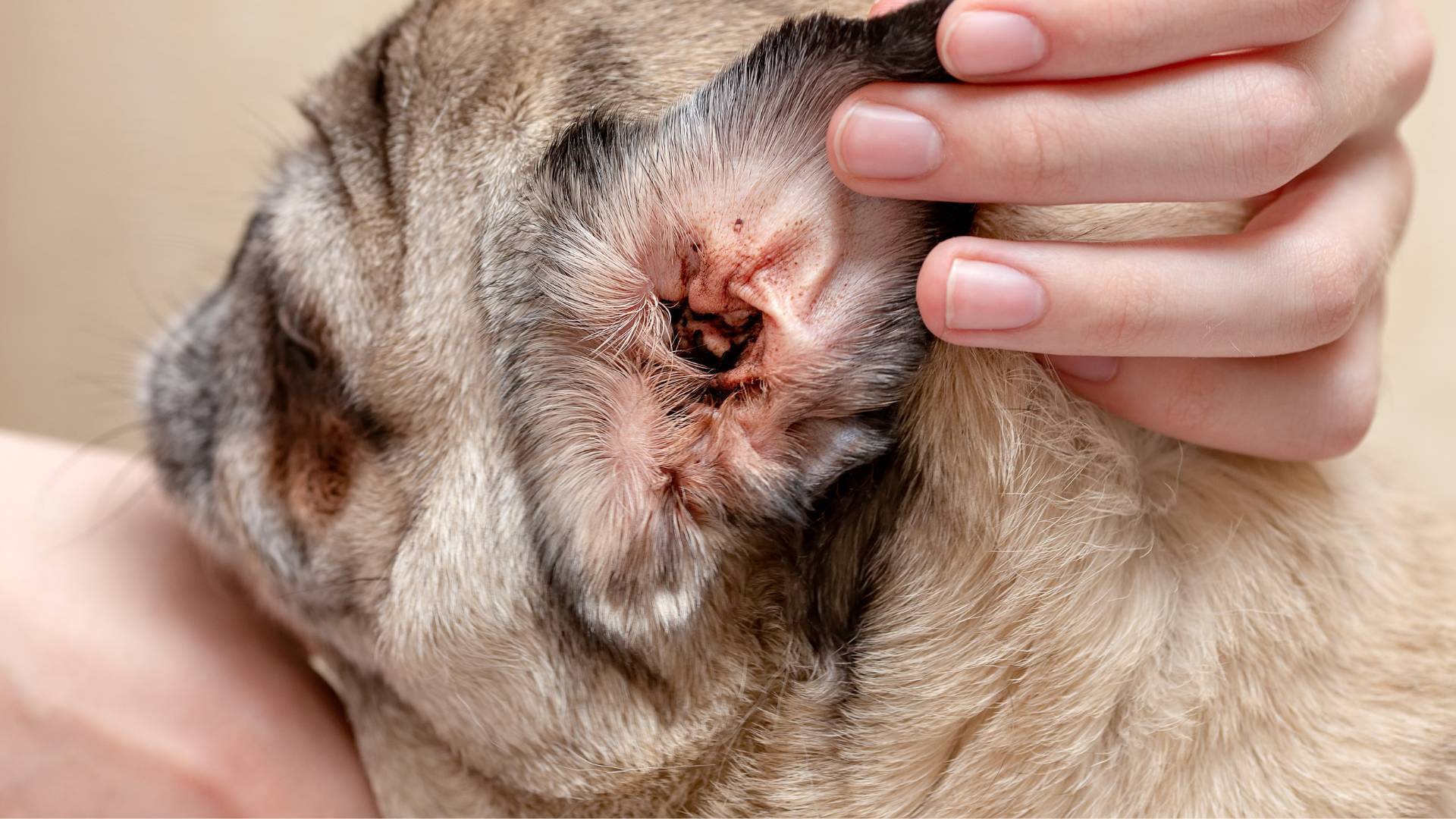Hello, pet lovers! I’m Jordan Lee, a certified groomer with five years of experience, here to help you tackle ear mites in dogs. My canine crew (a golden retriever and a spaniel) keeps me busy, and my spaniel once faced an ear mite issue that left him scratching nonstop.
At my grooming salon, I often guide clients on ear health, and I’m thrilled to share my knowledge. Understanding ear mites is key to your dog’s comfort, much like proper nutrition, as explored in an article on how to read cat food labels. This guide covers ear mite symptoms, treatments, and prevention, based on my hands-on experience. I’ll also link to articles like how to introduce a new pet to your home and trusted sources. Let’s keep those ears healthy!
What are ear mites?
Ear mites, tiny parasites called Otodectes cynotis, live in a dog’s ear canal, causing irritation. They’re contagious, spreading through close contact with infected animals. My spaniel likely caught them during a playdate. Unlike routine ear dirt, addressed in an article on how to clean your pet’s ears safely at home, ear mites need targeted treatment. They thrive in warm, moist environments and affect dogs of all ages, with puppies being more susceptible.
Symptoms of ear mites in dogs
Catching ear mites early reduces discomfort. Here are the signs I watch for:
- Itching. Intense ear scratching or head shaking. My spaniel’s constant scratching was a clear clue.
- Dark discharge. Crumbly, coffee-ground-like debris in ears. I saw this in my spaniel’s ears.
- Redness. Inflamed ear canals. My golden retriever’s ears appeared red during a check.
- Odor. Unpleasant smell from ears. Unlike my Persian cat’s clean ears, my spaniel’s had a strong odor.
- Head tilting. Ongoing tilting or balance issues, indicating discomfort.
The FDA Center for Veterinary Medicine provides insights on pet parasite control, including ear mites.
How ear mites are diagnosed
A vet diagnoses ear mites through the following means:
- Ear exam. Inspecting for inflammation and debris. My spaniel’s vet noticed redness right away.
- Microscope test. Swabbing ears to confirm mites. This verified my spaniel’s infection.
- History review. Discussing symptoms like scratching or contact with other pets.
For vet prep, see an article on telemedicine in veterinary care for remote options. Unlike skin conditions, covered in an article on how to spot and prevent common skin issues in dogs, ear mites require lab analysis.
Treatment for ear mites
Treating ear mites needs vet oversight. Here’s what I’ve learned:
Veterinary medication
Vets prescribe ear drops or topical treatments, like selamectin or ivermectin-based solutions. My spaniel used drops daily for two weeks. Follow vet directions carefully, as I did, to prevent resistance.
Ear cleaning
Clean ears before medication to clear debris. I used a vet-approved cleaner on my spaniel, as detailed in an article on how to clean your pet’s ears safely at home. Avoid cotton swabs, which can push debris deeper.
Treat all pets
Ear mites spread, so treat all household pets. I checked my golden retriever and British short-hair, but only my spaniel was infected. For multi-pet homes, see my guide on how to introduce a new pet to your home.
Follow-up
Vets re-examine ears post-treatment. My spaniel’s follow-up showed clear ears. Watch for recurring signs, like head shaking.
The American Kennel Club (AKC) offers guidance on treating ear mites in dogs, detailing vet-recommended steps.
Preventing ear mites
Prevention stops ear mites from returning. Here’s how I protect my dogs:
- Regular ear checks. Inspect ears weekly. I examine my golden retriever’s ears during grooming.
- Clean environment. Wash bedding and toys. My spaniel’s bed is cleaned regularly.
- Limit exposure: Avoid contact with infected animals. I supervise playdates closely.
- Support health. Nutrition boosts immunity, as discussed in an article on powering your pup: a vet nutritionist’s guide to daily protein.
- Vet visits. Regular checkups catch issues early. An article on AI in veterinary diagnostics explores health monitoring tech.
Special considerations
- Puppies. A client’s puppy needed milder drops due to sensitivity.
- Senior dogs. My golden retriever’s age required cautious dosing, as noted in an article on common senior dog behavior problems.
- Allergies. Dogs with allergies, like my spaniel, may have worse symptoms.
- Multi-pet homes. My hamster and African Grey stayed mite-free with prompt action.
When to see a vet
If you notice itching, discharge, or odor, contact a vet immediately. My spaniel’s scratching led to a same-day visit. For home care, see an article on how to add fiber to your dog’s diet for overall health. Untreated mites can cause infections, so act quickly.
As a groomer, I’ve watched ear mites turn my spaniel’s playful energy into constant scratching, but swift action brought back his joy. Regular ear checks and vet care keep your dog’s ears mite-free. Check out more pet health tips in articles like How to read cat food labels or Is corn good for dogs?. If symptoms linger, your vet is your best resource. Here’s to happy, healthy dogs.

I’m a certified pet groomer with five years of experience, passionate about helping pet owners keep their furry friends happy and healthy. I run a bustling grooming salon where I work with dogs, cats, and even the occasional small pet, offering practical advice based on hands-on expertise. My home is a lively pet haven, shared with a golden retriever, a spaniel, a British short-hair, a Persian cat, a hamster, and an African Grey parrot—each teaching me something new about pet care daily.
